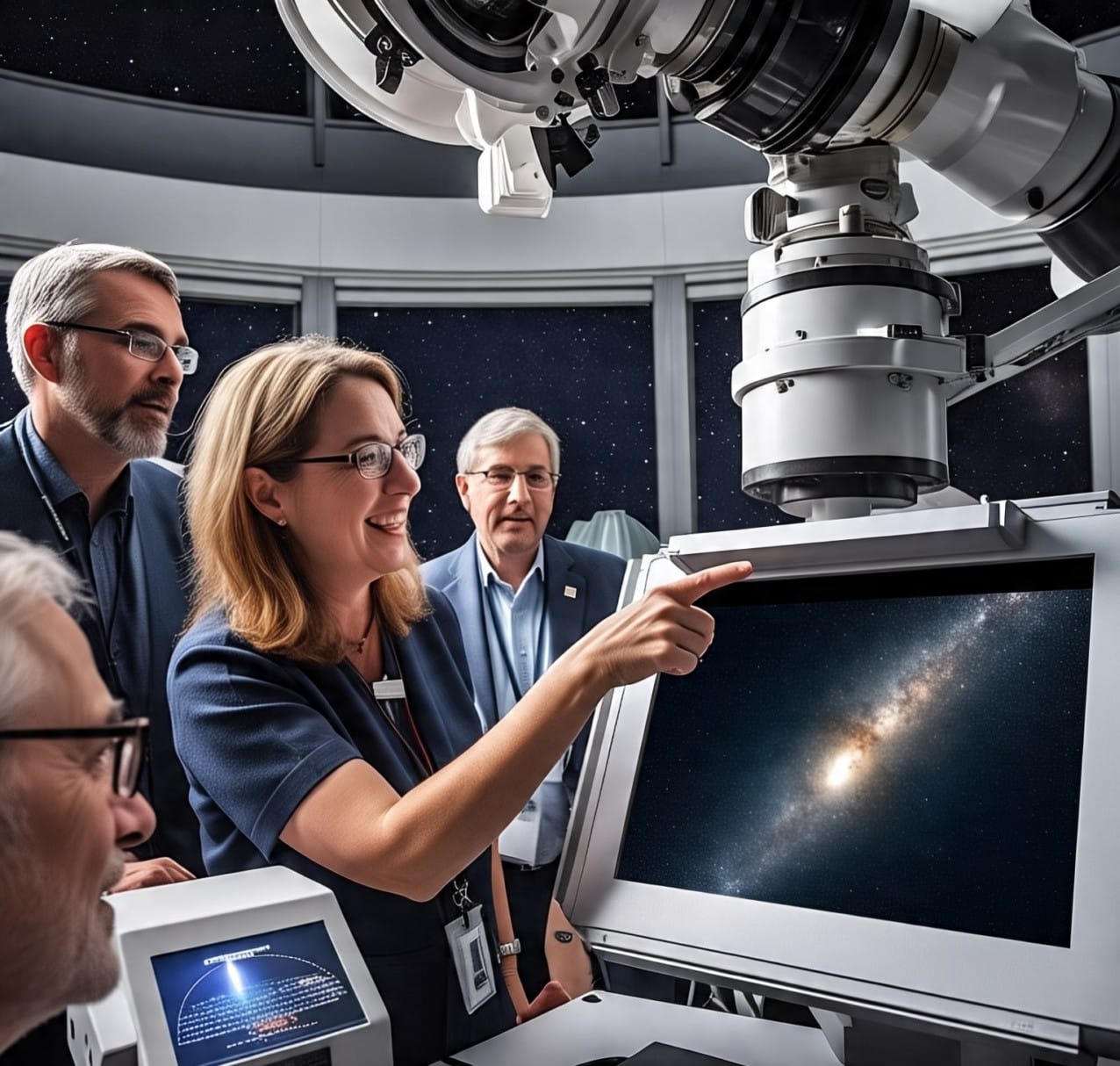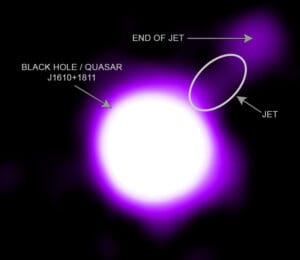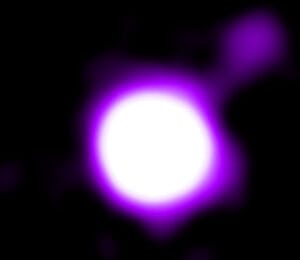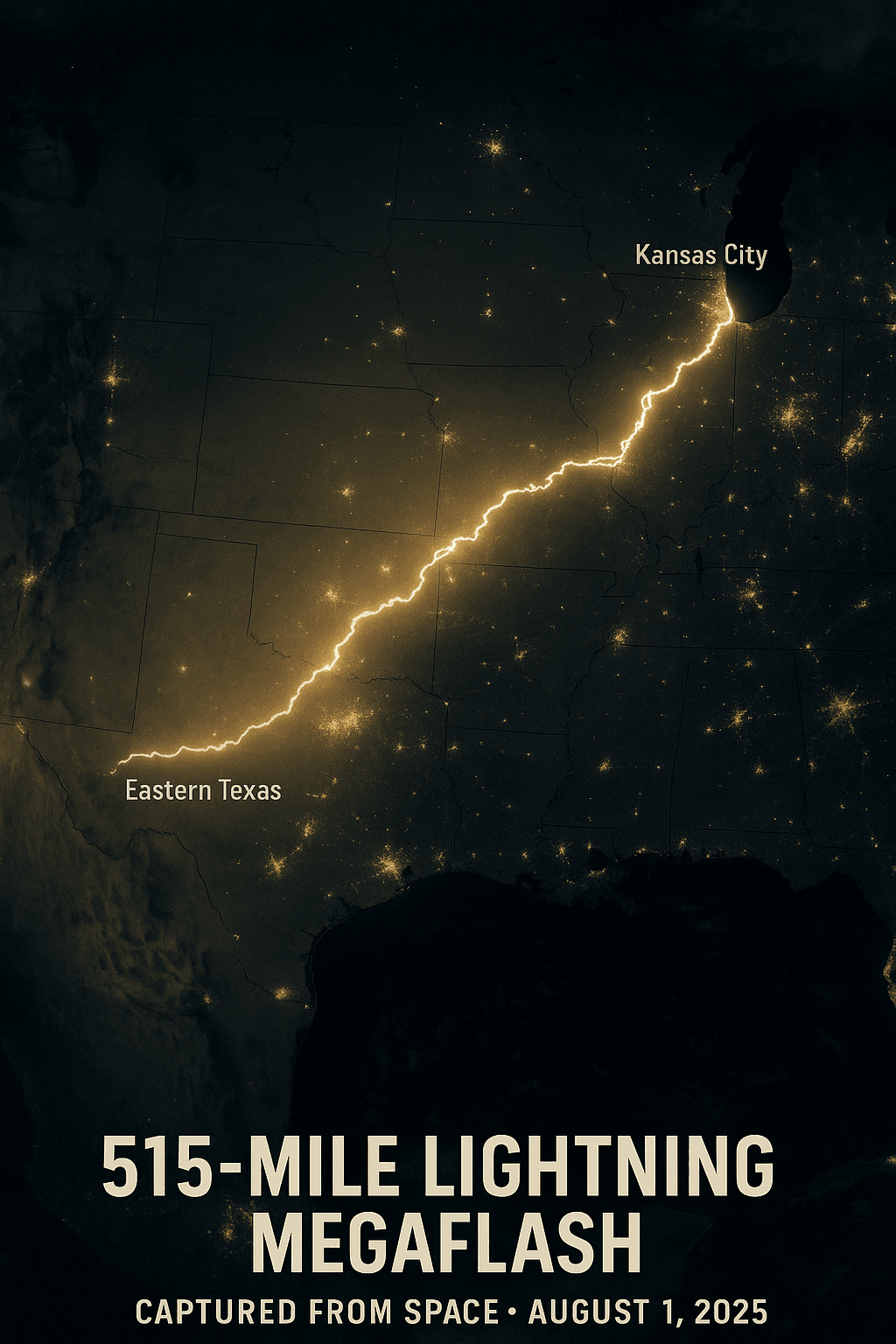
Imagine trying to spot the faint flicker of a single candle… while staring directly into the blinding beam of a high-powered flashlight pointed straight at your eyes. That, according to astronomer Jaya Maithil, is the monumental challenge overcome in one of the most stunning cosmic discoveries of the year. Astronomers have detected supermassive black hole jets of almost incomprehensible power – beams as bright as 10 trillion suns – shining across the universe from its tumultuous youth, illuminated by nothing less than the fading afterglow of the Big Bang itself.

Cosmic Flashlights from the Dawn of Time
This revelation, announced at the 246th meeting of the American Astronomical Society, comes from a team led by Maithil, a postdoctoral researcher at the Harvard and Smithsonian Center for Astrophysics. Using the combined might of NASA’s Chandra X-Ray Observatory and the ground-based Karl G. Jansky Very Large Array (VLA), they peered back to when the universe was a mere toddler, just 3 billion years old.
What they found were two colossal jets erupting from voracious supermassive black holes, known as quasars, residing a staggering 11.6 and 11.7 billion light-years away. Each jet stretches a mind-bending 300,000 light-years across the cosmos – nearly three times the diameter of our entire Milky Way galaxy.

Why This Discovery is Mind-Blowing (Beyond the Obvious Scale)
We’ve known about powerful black hole jets before. But what sets these apart is their unique lighting and their cosmic vintage:
Lit by the Big Bang’s Afterglow: This is the jaw-dropper. The jets are so incredibly ancient that they exist within a universe still bathed in the residual heat of creation – the Cosmic Microwave Background (CMB). This faint, cold radiation, the “afterglow” of the Big Bang, permeates all of space. Normally, it’s incredibly weak.
The Power Boost: These jets aren’t passive. They are composed of particles accelerated to nearly the speed of light. When these ultra-fast particles collide with the photons of the CMB, something extraordinary happens. The collisions are so energetic that they boost the CMB photons way up in energy, transforming them from faint microwave whispers into powerful X-rays detectable by Chandra. As Maithil poetically stated, “They are transforming the first light of the universe into high-energy jets.”
A Window to Galaxy Adolescence: The era when these jets erupted, roughly 11-12 billion years ago, was the universe’s wild teenage phase. Galaxies and their central black holes were growing at a breakneck pace, feasting on gas and colliding with each other. Quasars, powered by these insatiably feeding black holes, were far more common. Studying these specific jets, illuminated by the CMB, gives astronomers an unprecedented probe into how these monstrous black holes interacted with and shaped their nascent galaxies during this critical period. “These quasars are like cosmic time capsules,” Maithil explained. “If we understand them, we can understand how they were impacting the growth of their galaxy and the environment in which they resided.”

The “Candlelight” in the Flashlight’s Glare: Spotting the Jets
Detecting these specific jets required immense skill and cutting-edge technology. The central quasars themselves are phenomenally bright, dominating the view. The jets, while immensely powerful, are diffuse and, crucially, only visible in X-rays because of their interaction with the CMB. They are vastly fainter than the brilliant core when viewed directly.
This is where Maithil’s “candlelight vs. flashlight” analogy perfectly captures the challenge. The quasar core is the blinding flashlight aimed right at us. The jet, illuminated by the CMB-boosted X-rays, is the faint candle flickering right beside it. Chandra’s unparalleled X-ray vision was essential to tease out the subtle, extended structure of the jets against this overwhelming glare.
A Glimpse of the Beast: Quasar J1610+1811
One of the newly studied jets, emanating from the quasar J1610+1811 (located ~11.7 billion light-years away), offers a tangible example. In the Chandra X-ray image:
A brilliant white core marks the quasar itself – the powerhouse supermassive black hole.
Extending towards the upper right is a slender, faint purple line – the jet itself, detected in X-rays.
This line ends in a small, bright blob, likely a hotspot where the jet plows into surrounding intergalactic material.
A fainter, dimmer jet appears to shoot in the opposite direction (down and left), showcasing the typical bipolar nature of these outflows.
*(Image Suggestion: Insert the Chandra image of J1610+1811 described, with clear alt-text: “Chandra X-ray image showing quasar J1610+1811. Bright white core with faint purple jet extending to upper right, ending in a bright blob. Fainter counter-jet visible downward.” Credit: X-ray: NASA/CXC/CfA/J. Maithil et al.; Illustration: NASA/CXC/SAO/M. Weiss; Image Processing: NASA/CXC/SAO/N. Wolk)*
Why Should We Care? The Ripple Effects
Discovering jets illuminated by the Big Bang’s afterglow isn’t just a cosmic curiosity. It has profound implications:
Measuring Jet Power: The brightness of these CMB-lit jets directly tells astronomers about the speed and energy of the particles within them, offering a new way to gauge the raw power unleashed by these supermassive black holes.
Mapping the Invisible: The jets act like probes, revealing the density and structure of the incredibly tenuous intergalactic medium they traverse, even at vast distances.
Understanding Galaxy Evolution: The energy dumped by such jets into their surroundings is immense. This discovery provides direct evidence of how quasars in the young universe could heat gas, stifle star formation, and ultimately regulate the growth of their host galaxies – a crucial piece in the puzzle of how galaxies like our Milky Way came to be.
Probing the Early Universe: Using the jets as backlights illuminated by the CMB offers a novel way to study the properties of the CMB itself in different regions of the early cosmos.
A Testament to Human Ingenuity and Cosmic Wonder
The detection of these 10-trillion-sun-bright jets, shining only because they are illuminated by the fading echo of the universe’s birth, stands as a breathtaking achievement. It combines the extreme physics of supermassive black holes, the vast scales of cosmic jets, the fundamental relic radiation of the Big Bang, and the cutting-edge capabilities of our most powerful telescopes.
It reminds us that the universe is filled with phenomena beyond our wildest imagination, where the most violent events can be lit by the oldest light. As we continue to analyze the data from Chandra and the VLA, these cosmic flashlights from the dawn of time promise to illuminate not just the space around them, but also our understanding of how the universe grew up. They are beacons from an era of frenzied growth, whispering secrets about the forces that shaped everything we see today, powered by the very beginning of everything.









